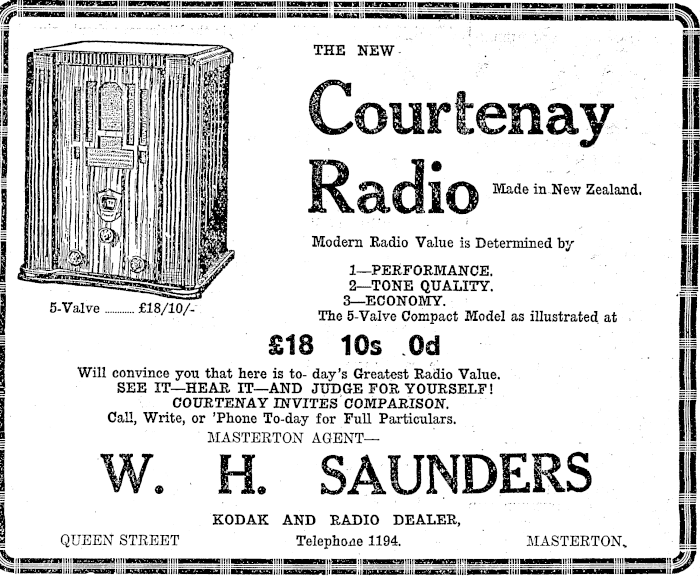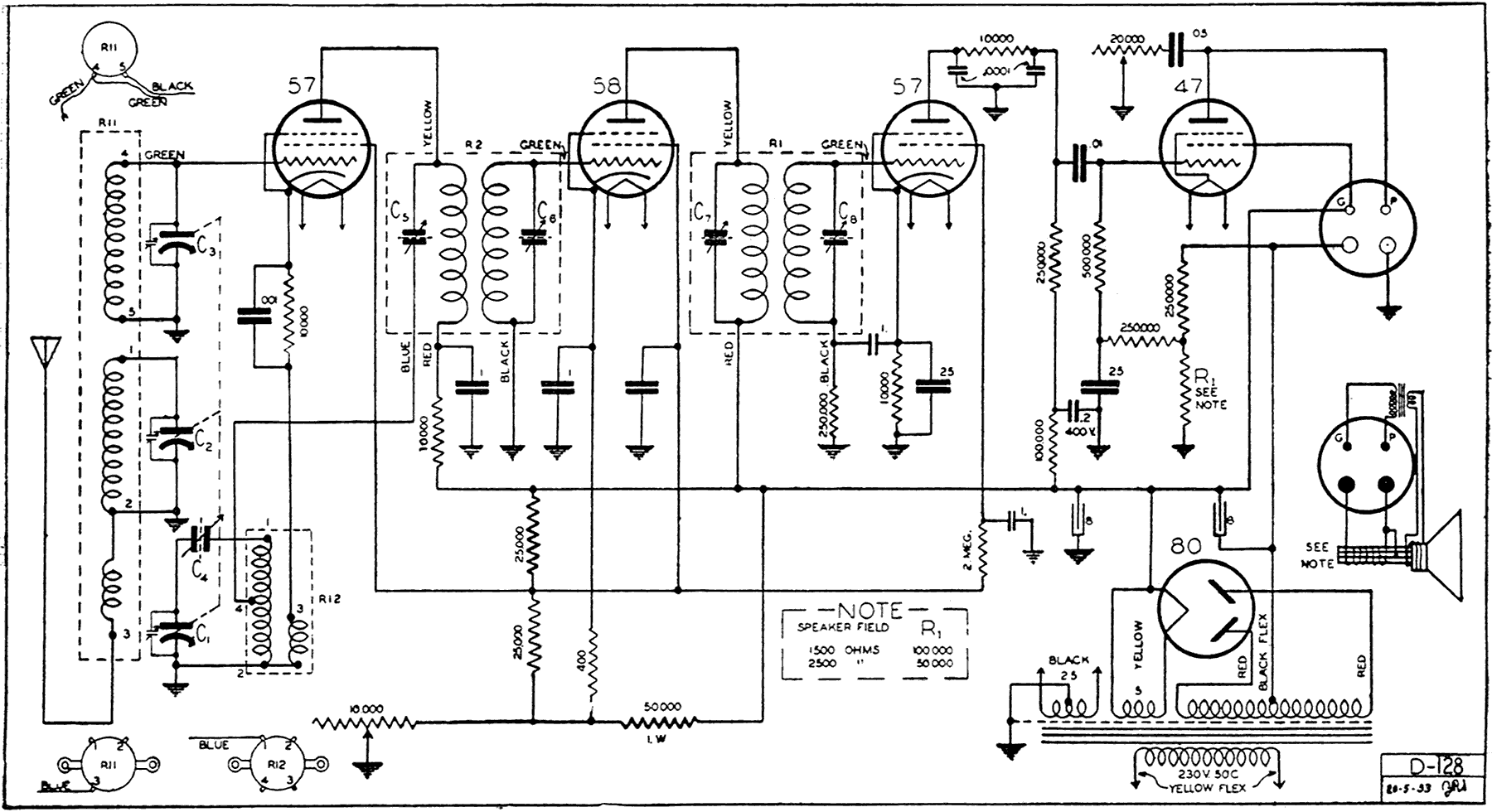Other radios based on the same chassis:
5-valve superhet, broadcast band radio. Appears to have been released in several cabinets, with both peep hole and arc dial arrangements.
The square cabinet design (or very similar) was also seen in the 6BS battery set (albeit with an arc dial).
Electrically it seems to have been a minor update of the Courtenay model 5C and so both schematics are shown below, and this model is combined with the 5C models as far as thier chassis' go.
Confirmation required of the model codes, as most of the photos are not clear enough. The tags show "Stewart Hardware Ltd", and this model would have been right at the end of that company's involvement with Courtenay.

WAIRARAPA DAILY TIMES, 31 MAY 1933
Intermediate Frequency: 175kc/s
Frequency Bands: 1
Chassis Notes(most schematics can be clicked to download a full size version)
Note, this schematic is almost identical, but has a 250k resistor to ground on the 2nd IF secondary, and a different B+ power arrangement for the first audio 57. This might be the 103 schematic with the above being the 5C? Its in the Pacific service literature as a '5V M.V.C.'
General Construction Notes for Radio Corporation of New Zealand Ltd:
The first digit of the serial number typically indicates the year of manufacture of RCNZ chassis' (although not the decade - that requires a little knowledge of the valves, construction, etc). Sets from around 1934 onwards were often (but not always) constructed in a distinctive pressed 'baking pan' style chassis, seemingly unique to RCNZ.
Model codes beginning with a 0, for example the model 051, are Osram valve versions of the model without the leading 0. Technically the 0 should be an O (for Osram), however the digit 0 was used throughout the site before this fact was discovered.
The E suffix indicates a magic eye option is fitted (in models which were available with or without, such as the model 25).
A and B suffixes appear to be simply updates to the current model, R also appears to be simply an updated model ('R'edesign, perhaps?)
P indicates either a permanent magnet speaker version of a model which also came with an electromagnet speaker (the model 26 for example), or a portable model (like the model 694P). This suffix was used in the mid 50's when Radio Corp was changing over.
N and M indicated miniature valve versions of a model which started with all (or a mix, ie: model 5) of larger valves. One of these two codes may indicate a transitional mixture of octal and miniature - clarification is required.
S often indicates a stereo model. It can also indicate 'self-biased' in the transition period between back-biased and self biased sets where there were models with both methods employed (53S for example)
Finally, other suffixes and prefixes make occasional appearances in the RCNZ lineup - like the 66W (a variant of the long-running model 66) and the 75XA (a 10-valve version of the model 75 with a separate amplifier chassis).
Model nicknames are often sourced from either newspaper advertising, company literature or the NZ Radio Traders Federation official trade-in price books (Particularly Courtenay models from this publication)
In 1954, model numbering changed, to begin with the number of valves (ie: 501 - 5 valves, 1006 - 10 valves, etc) although the final 2 digits don't appear to have much significance. Middle digits of 5 (portable) or 6 (mantle, including clock radio) are used on the AWA-designed plastic-cased sets.
| YEAR | MODEL NAME |
|---|---|
| 1932 | Courtenay model 5C |
| 1933 | CQ model 52 |
| 1934 | Courtenay model 103 |
| 1932 | Pacific model 5C |
| 1934 | Stella model 5A |
| 1933 | Sandison model 5V |